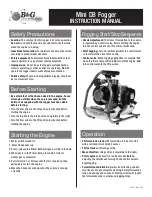
Adult and Pediatric Regional Saturation Sensor Application
Operator's Manual
3-11
3.15.6
Sensor Placement
Remove the protective backing label from the adhesive side of the sensor and apply to the skin.
Continue applying the sensor by smoothing it to the skin from the center outward. Ensure edges
of the sensor are sealed to prevent light from entering (see
and sensor instructions for
use
inside carton).
Secure the sensor cable to a fixed object to avoid strain on the sensor-to-skin interface using
strain-relief clips.
Figure 3-5.
Sensor Placement
Caution:
To avoid pressure sores, do not apply external pressure (for example, headbands, wraps, tape) to
the sensor.
Note:
EEG and level of consciousness monitoring can be used simultaneously with INVOS™ adult regional
saturation or pediatric regional saturation sensors (overlapping sensor pads if necessary), provided they do
not block the three optical windows on the sensor.
Note:
If space is limited, sensors may overlap, provided the three optical windows on each sensor pad remain
unobstructed.
Note:
For extended monitoring, Covidien recommends using a new sensor every 24 hours.
Summary of Contents for INVOS 5100C
Page 1: ...Operator s Manual INVOS Regional Saturation Patient Monitoring System Model 5100C...
Page 12: ...Page Left Intentionally Blank x Operator s Manual...
Page 26: ...Introduction Page Left Intentionally Blank 1 14 Operator s Manual...
Page 30: ...Product Overview Page Left Intentionally Blank 2 4 Operator s Manual...
Page 46: ...Installation Page Left Intentionally Blank 3 16 Operator s Manual...
Page 50: ...Quick Setup Page Left Intentionally Blank 4 4 Operator s Manual...
Page 164: ...Specifications Page Left Intentionally Blank A 12 Operator s Manual...
Page 170: ...Clinical Studies Page Left Intentionally Blank B 6 Operator s Manual...
Page 176: ...Glossary Page Left Intentionally Blank C 6 Operator s Manual...
Page 177: ......
















































